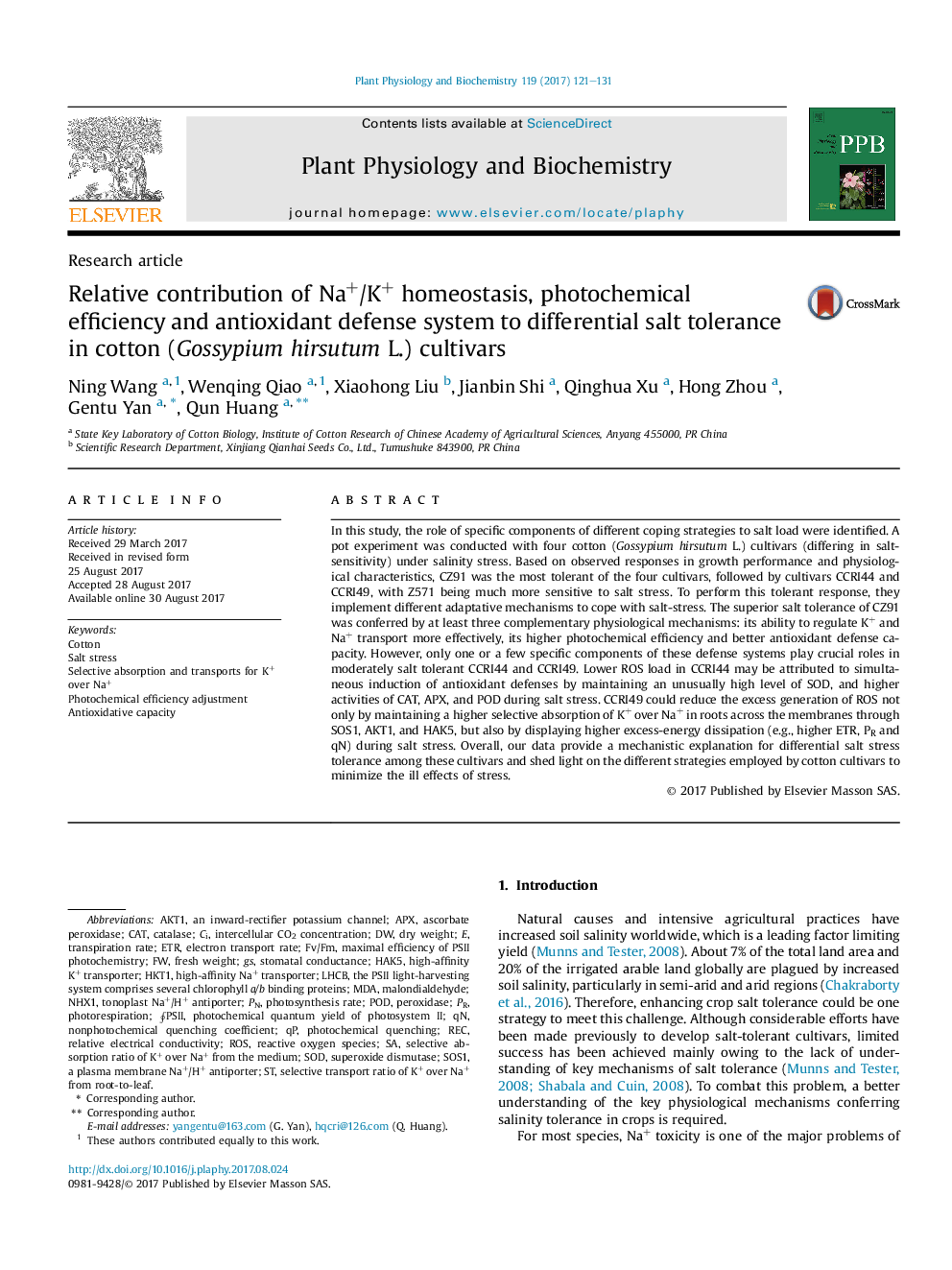| کد مقاله | کد نشریه | سال انتشار | مقاله انگلیسی | نسخه تمام متن |
|---|---|---|---|---|
| 5515297 | 1541902 | 2017 | 11 صفحه PDF | دانلود رایگان |

- Salinity treatment significantly reduced plant biomass of all cotton cultivars.
- Salt tolerance of cotton cultivars was conferred by three complementary physiological strategies.
- Strategies differ among salt tolerant cotton cultivars under salinity stress.
In this study, the role of specific components of different coping strategies to salt load were identified. A pot experiment was conducted with four cotton (Gossypium hirsutum L.) cultivars (differing in salt-sensitivity) under salinity stress. Based on observed responses in growth performance and physiological characteristics, CZ91 was the most tolerant of the four cultivars, followed by cultivars CCRI44 and CCRI49, with Z571 being much more sensitive to salt stress. To perform this tolerant response, they implement different adaptative mechanisms to cope with salt-stress. The superior salt tolerance of CZ91 was conferred by at least three complementary physiological mechanisms: its ability to regulate K+ and Na+ transport more effectively, its higher photochemical efficiency and better antioxidant defense capacity. However, only one or a few specific components of these defense systems play crucial roles in moderately salt tolerant CCRI44 and CCRI49. Lower ROS load in CCRI44 may be attributed to simultaneous induction of antioxidant defenses by maintaining an unusually high level of SOD, and higher activities of CAT, APX, and POD during salt stress. CCRI49 could reduce the excess generation of ROS not only by maintaining a higher selective absorption of K+ over Na+ in roots across the membranes through SOS1, AKT1, and HAK5, but also by displaying higher excess-energy dissipation (e.g., higher ETR, PR and qN) during salt stress. Overall, our data provide a mechanistic explanation for differential salt stress tolerance among these cultivars and shed light on the different strategies employed by cotton cultivars to minimize the ill effects of stress.
Journal: Plant Physiology and Biochemistry - Volume 119, October 2017, Pages 121-131